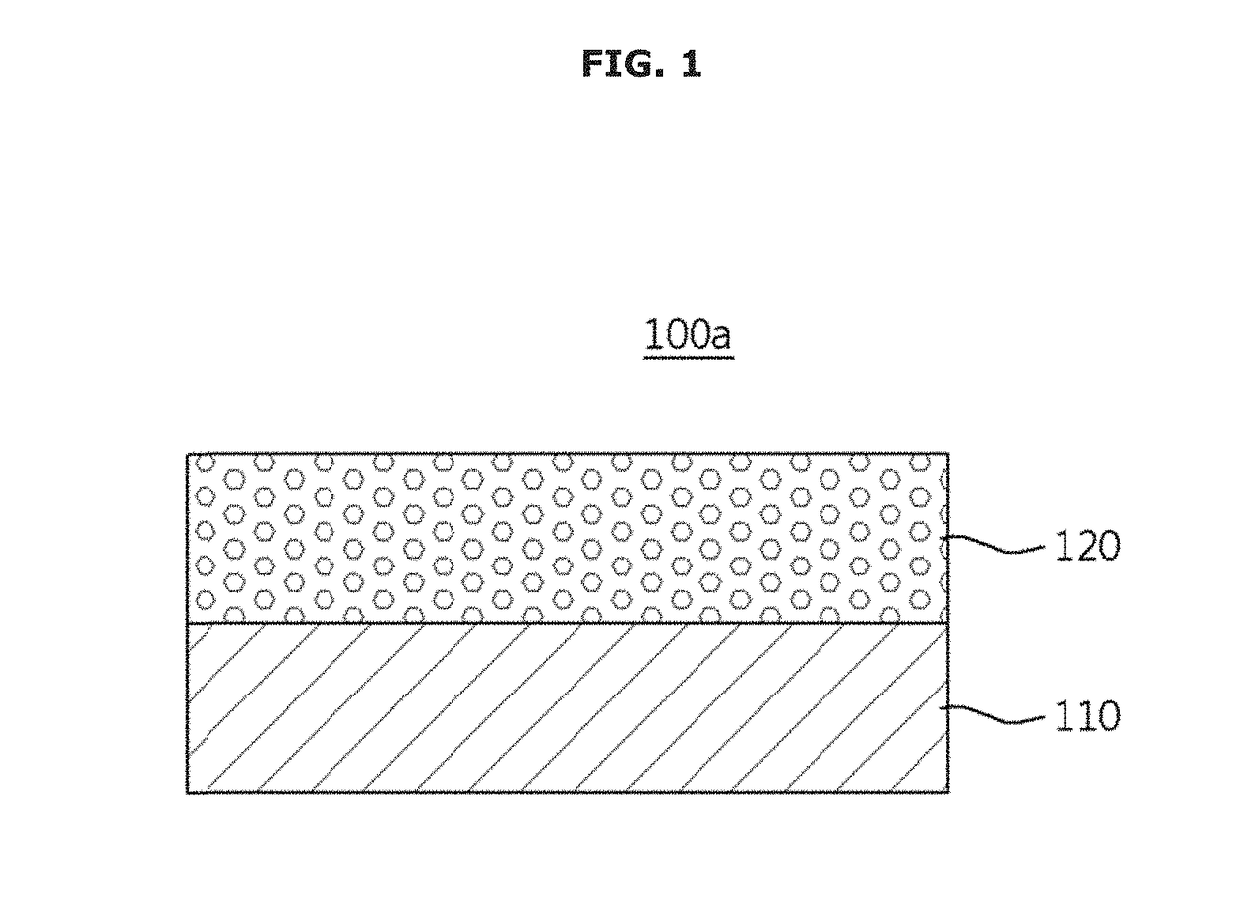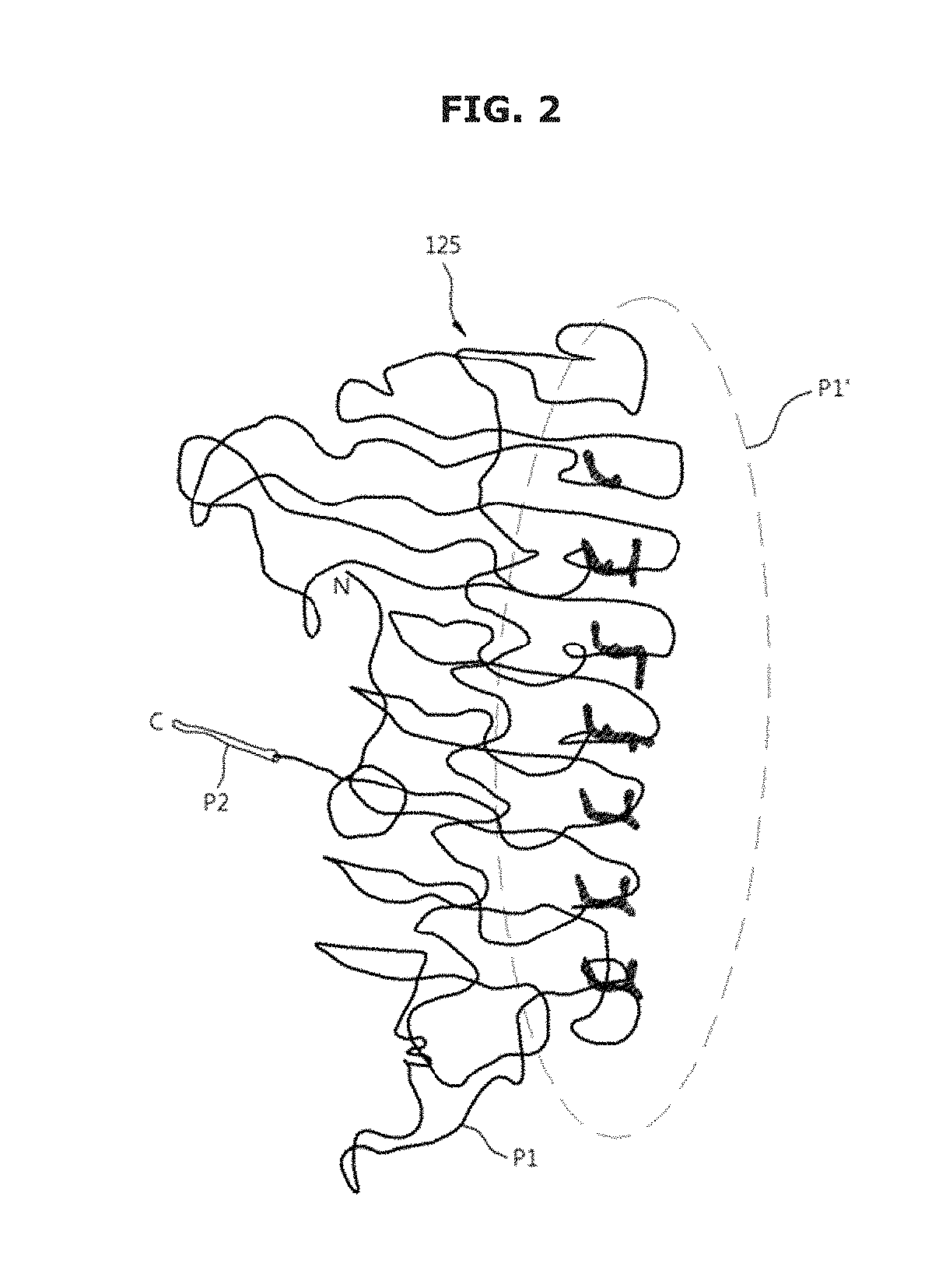Antifreeze member
a technology of antifreeze and member, which is applied in the field of antifreeze member, can solve the problems of limited cooling efficiency, frost or ice formation on the surface of metal substrates, aluminum substrates, etc., and achieve the effect of improving the stability of the antifreeze protein
- Summary
- Abstract
- Description
- Claims
- Application Information
AI Technical Summary
Benefits of technology
Problems solved by technology
Method used
Image
Examples
experimental example 1
[0084]As an experimental group, a recombinant antifreeze protein 125 in which an Al-binding peptide was conjugated to a performance-enhancing reformed antifreeze protein was coated on an Al substrate. As a control group, a performance-enhancing reformed antifreeze protein not including the Al-binding peptide was coated on an Al substrate. The coating was performed by dipping the Al substrate in a protein solution. After the protein coating process, the coating was identified by using an HRP-TMB method. The HRP-TMB method to detect histidine adhered to the recombinant antifreeze protein 125 may be used to identify whether the protein was coated on the Al substrate based on a phenomenon in which blue color is yielded in the presence of histidine.
[0085]FIG. 7 is a diagram illustrating a principle of experiment according to Experimental Example 1. FIG. 8 is a diagram illustrating results of experiment according to Experimental Example 1
[0086]As illustrated in FIG. 7, the recombinant ant...
experimental example 2
[0088]As an experimental group, a metal substrate 110, which was coated with the recombinant antifreeze protein 125 in which the Al-binding peptide was conjugated to the performance-enhancing reformed antifreeze protein, was immersed in 1 ml of a phosphate buffered saline (“PBS”) solution including 0.1% trehalose for 1 hour was prepared in order to improve stability of the metal substrate 110. Then, the metal substrate 110 was washed using the PBS solution and maintained at room temperature. As a control group, a metal substrate 110 not coated with trehalose was prepared. Then, the HRP-TMB method as illustrated in FIG. 7 was used to identify the degree of denaturation of the recombinant antifreeze proteins 125 of the experimental group and the control group.
[0089]The results are illustrated in FIG. 9. Referring to FIG. 9, when trehalose was coated on the metal substrate 110, blue color was exhibited after 12 days. That is, it was confirmed that the recombinant antifreeze protein 125...
experimental example 3
[0090]Ultra-low temperatures of the recombinant antifreeze protein 125, the antifreeze member 100a onto which the recombinant antifreeze protein 125 is immobilized, and the antifreeze member 100b further including a trehalose coating layer were measured. A differential scanning calorimetry was used to measure each of the ultra-low temperatures.
[0091]The results are shown in FIGS. 10, 11, and 12. FIG. 10 is a graph illustrating ultra-low temperature of the recombinant antifreeze protein 125. FIG. 11 is a graph illustrating ultra-low temperature of the antifreeze member 100a onto which the recombinant antifreeze protein 125 is immobilized. FIG. 12 is a graph illustrating ultra-low temperature of the antifreeze member 100b further including the trehalose coating layer.
[0092]Referring to FIG. 10, the ultra-low temperature of the recombinant antifreeze protein 125 was about −21.5° C. Referring to FIG. 11, the ultra-low temperature of the antifreeze member 100a onto which the recombinant ...
PUM
| Property | Measurement | Unit |
|---|---|---|
| temperature | aaaaa | aaaaa |
| temperature | aaaaa | aaaaa |
| surface resistance | aaaaa | aaaaa |
Abstract
Description
Claims
Application Information
 Login to View More
Login to View More - R&D
- Intellectual Property
- Life Sciences
- Materials
- Tech Scout
- Unparalleled Data Quality
- Higher Quality Content
- 60% Fewer Hallucinations
Browse by: Latest US Patents, China's latest patents, Technical Efficacy Thesaurus, Application Domain, Technology Topic, Popular Technical Reports.
© 2025 PatSnap. All rights reserved.Legal|Privacy policy|Modern Slavery Act Transparency Statement|Sitemap|About US| Contact US: help@patsnap.com



